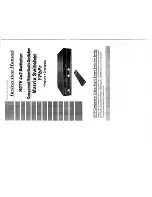
SUMMARY STEPS
1.
enable
2.
erase nvram
DETAILED STEPS
Purpose
Command or Action
Enables privileged EXEC mode.
enable
Step 1
Example:
• Enter your password if prompted.
Device> enable
Clears the contents of your startup configuration.
erase nvram
Step 2
Example:
For all platforms except the Class A Flash file
system platforms, this command erases NVRAM.
The startup configuration file cannot be restored
once it has been deleted. On Class A Flash file
system platforms, when you use the
erase
startup-config
EXEC command, the device
erases or deletes the configuration pointed to by
the CONFIG_FILE environment variable. If this
variable points to NVRAM, the device erases
NVRAM. If the CONFIG_FILE environment
variable specifies a flash memory device and
configuration filename, the device deletes the
configuration file. That is, the device marks the
file as “deleted,” rather than erasing it. This
feature allows you to recover a deleted file.
Note
Device# erase nvram
Deleting a Specified Configuration File
To delete a specified configuration on a specific flash device, complete the task in this section:
SUMMARY STEPS
1.
enable
2.
delete flash-filesystem:filename
DETAILED STEPS
Purpose
Command or Action
Enables privileged EXEC mode.
enable
Step 1
Example:
• Enter your password if prompted.
Device> enable
System Management Configuration Guide, Cisco IOS XE Gibraltar 16.10.x (Catalyst 9200 Switches)
173
Managing Configuration Files
Deleting a Specified Configuration File
















































